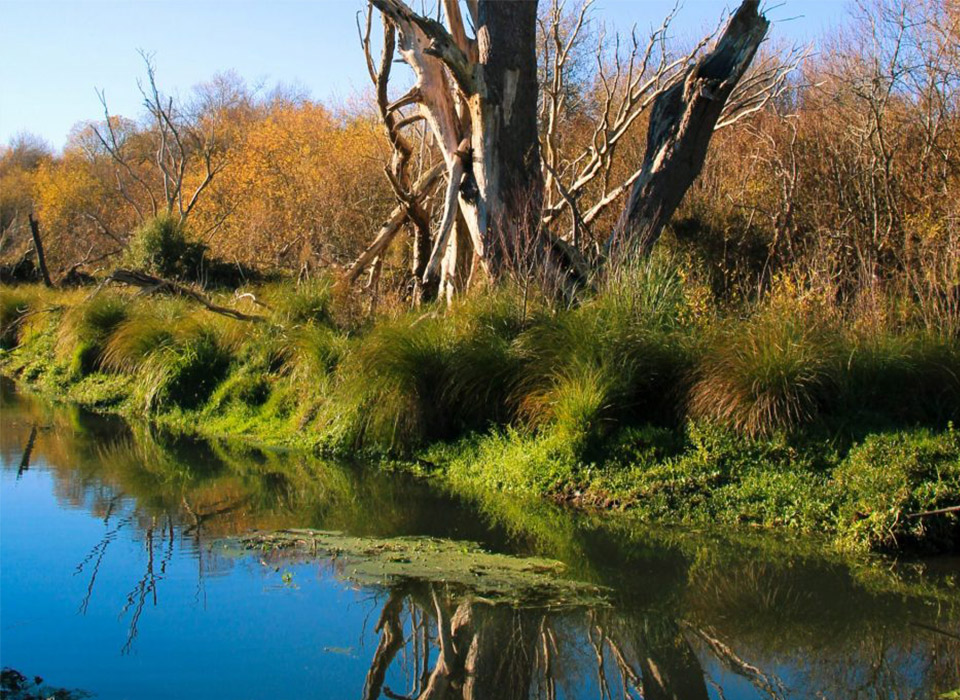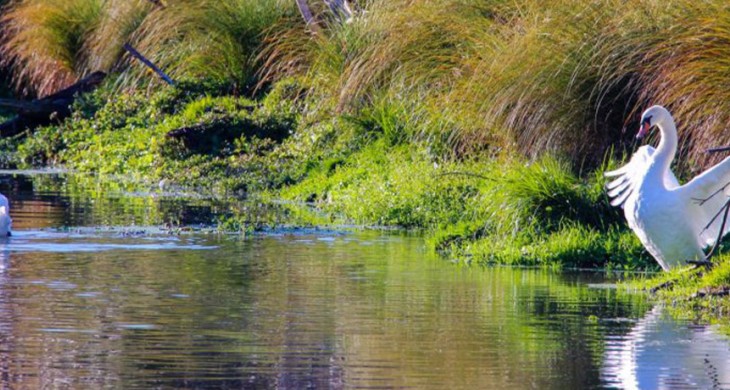21 February 2022
In February 2022, Selwyn District Council welcomed a huge boost from the Government to restore one of the most significant wetlands in Canterbury.
Tārerekautuku/Yarrs Lagoon
The four-and-a-half year project to restore 81-hectare Tārerekautuku/Yarrs Lagoon received $796,980 in funding from the Ministry for the Environment's Freshwater Improvement Fund. This funding is part of the Government’s Jobs for Nature programme
Tārerekautuku is one of the largest freshwater wetlands in lowland Canterbury. The wetland, near Lincoln, is a significant part of the ecology of Te Waihora/Lake Ellesmere and its catchment, with the Ararira/LII River flowing through it to the lake.
Formerly an open-water body surrounded by low-lying swampland, drainage practices and land clearance resulted in the lowering of the water table, transforming it to a swamp and marsh habitat. Tārerekautuku was a key mahinga kai site for Ngāi Tahu.
Wetland a significant area of native biodiversity
The wetland is a significant area of native biodiversity, supporting a range of indigenous wetland plants including locally uncommon species. It also provides habitat for native birds, lizards and invertebrates.
Recognising the wetland’s significant value, the Council helped initiate a local community Wetland Care Group in 2018, together developing a reserve management plan and giving motivation to the site’s restoration.
The project will focus on the removal of willows and weeds, predator trapping and native plantings to restore lost values.

Project to create revitalisation
Selwyn District Council Environmental and Regulatory Services Group Manager Tim Harris said the project would create opportunities for new employment and help revitalise this natural asset of the district.
“This will bring back a taonga for Waikirikiri Selwyn, but it’s huge for the whole region,” he said. “The wetland helps improve the water quality flowing into Te Waihora, and the project will restore a habitat that’s now rare on the lowland Canterbury Plains.
“We’re creating an oasis for native plants and animal life, and giving life back to a significant mahinga kai. There’s also considerable potential to allow for recreational use in future – including walking, kayaking, boating and bird watching.”
This project is a partnership with the Tārerekautuku Yarrs Lagoon Landcare Group, Te Papa Atawhai (Department of Conservation), Living Water (a partnership between Fonterra and DOC) and Environment Canterbury, and is supported by Te Taumutu Rūnanga.
Mahinga kai
In 2022, Te Taumutu Rūnanga Chair Elizabeth Brown said Tārerekautuku was part of an extensive network of mahinga kai sites, which were highly significant to mana whenua.
“A wide range of native species and resources were once found at Tārerekautuku, which were used to sustain our tīpuna – our ancestors,” she said. “The name Tārerekautuku refers to the swinging legs of the australasian bittern, which suggests this wetland was once a stronghold for this globally endangered manu/birds.
“We hope the restoration of Tārerekautuku, and predator control, will see bittern and other native species return to thrive here again, as we work in partnership with the Crown to restore the mana and mauri of Te Waihora.”
Tārerekautuku wetland project is also supported by the Te Waihora Co-Governance group, a partnership of Ngāi Tahu, Environment Canterbury, Selwyn District Council, Christchurch City Council and Te Papa Atawhai. This partnership seeks the restoration of 3500ha of wetlands around Te Waihora and the lake itself.

